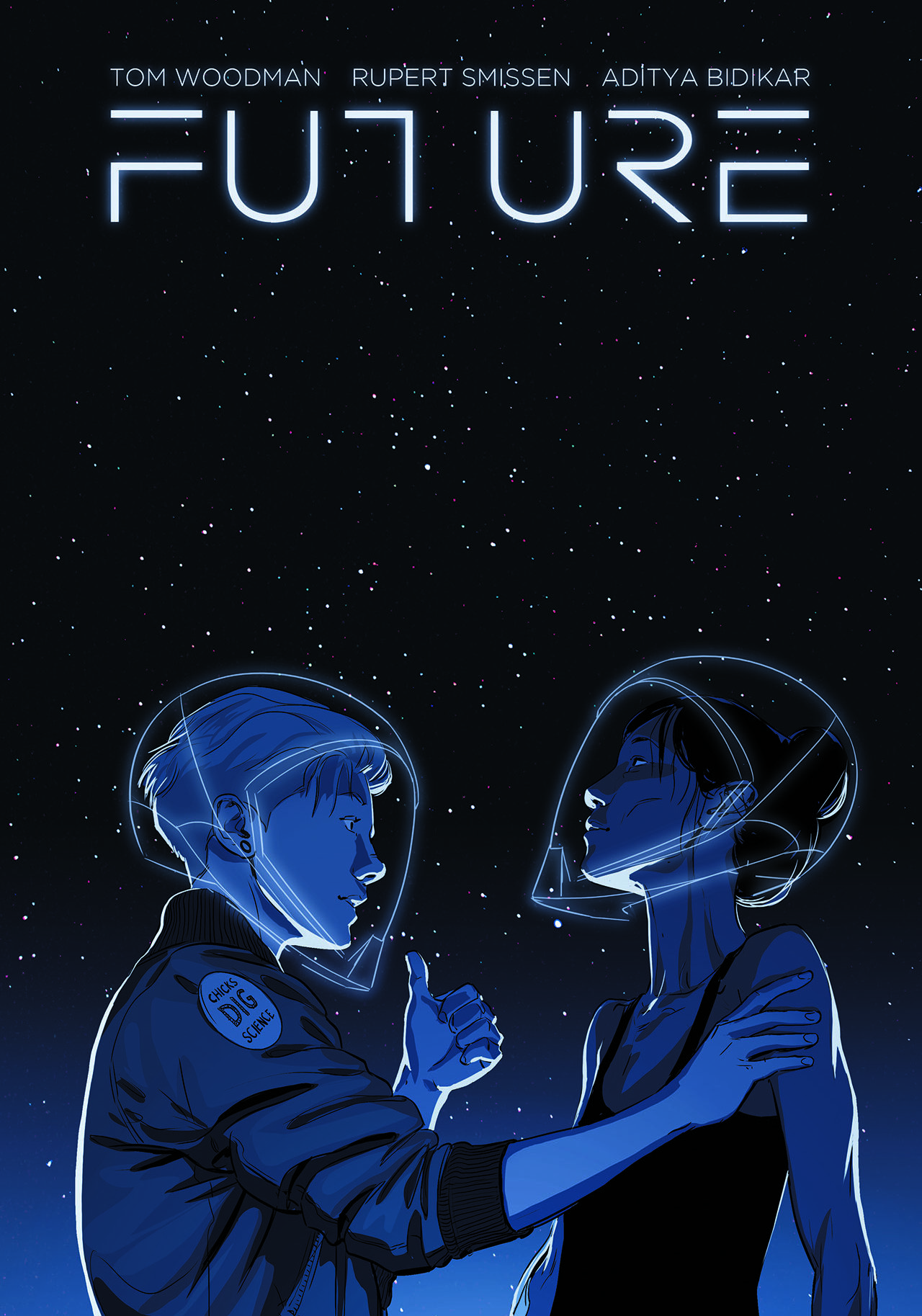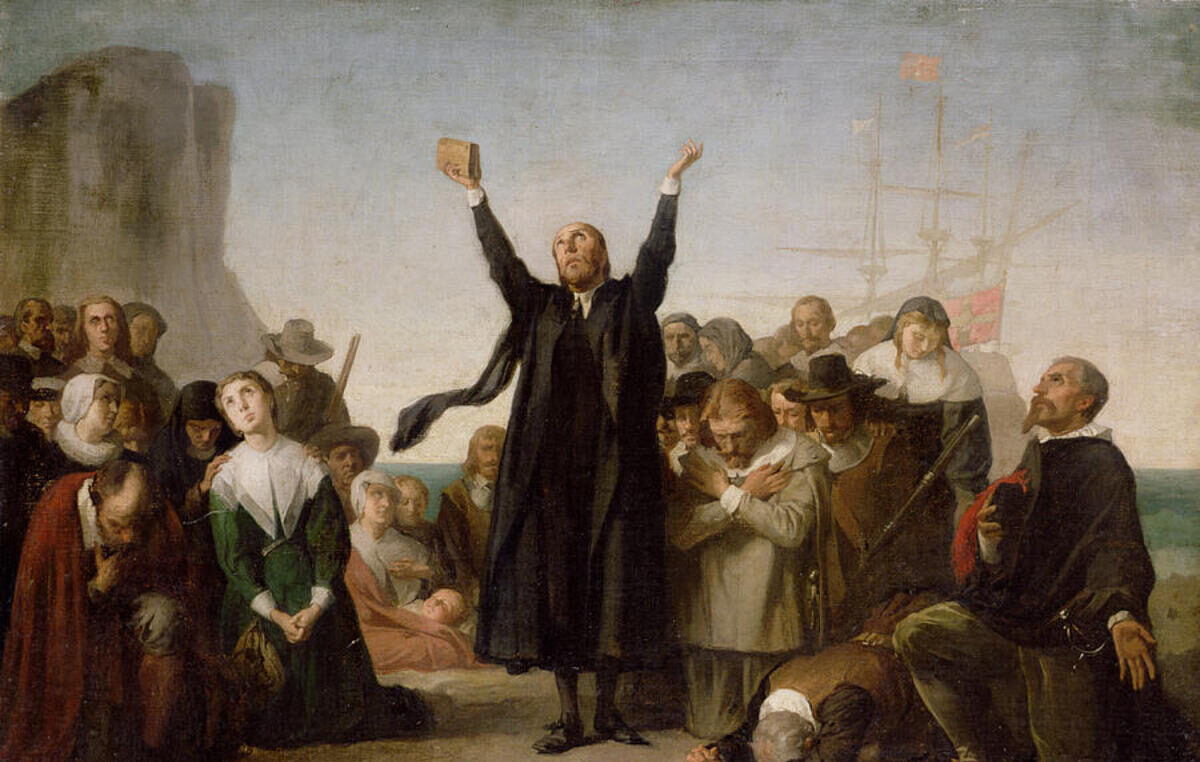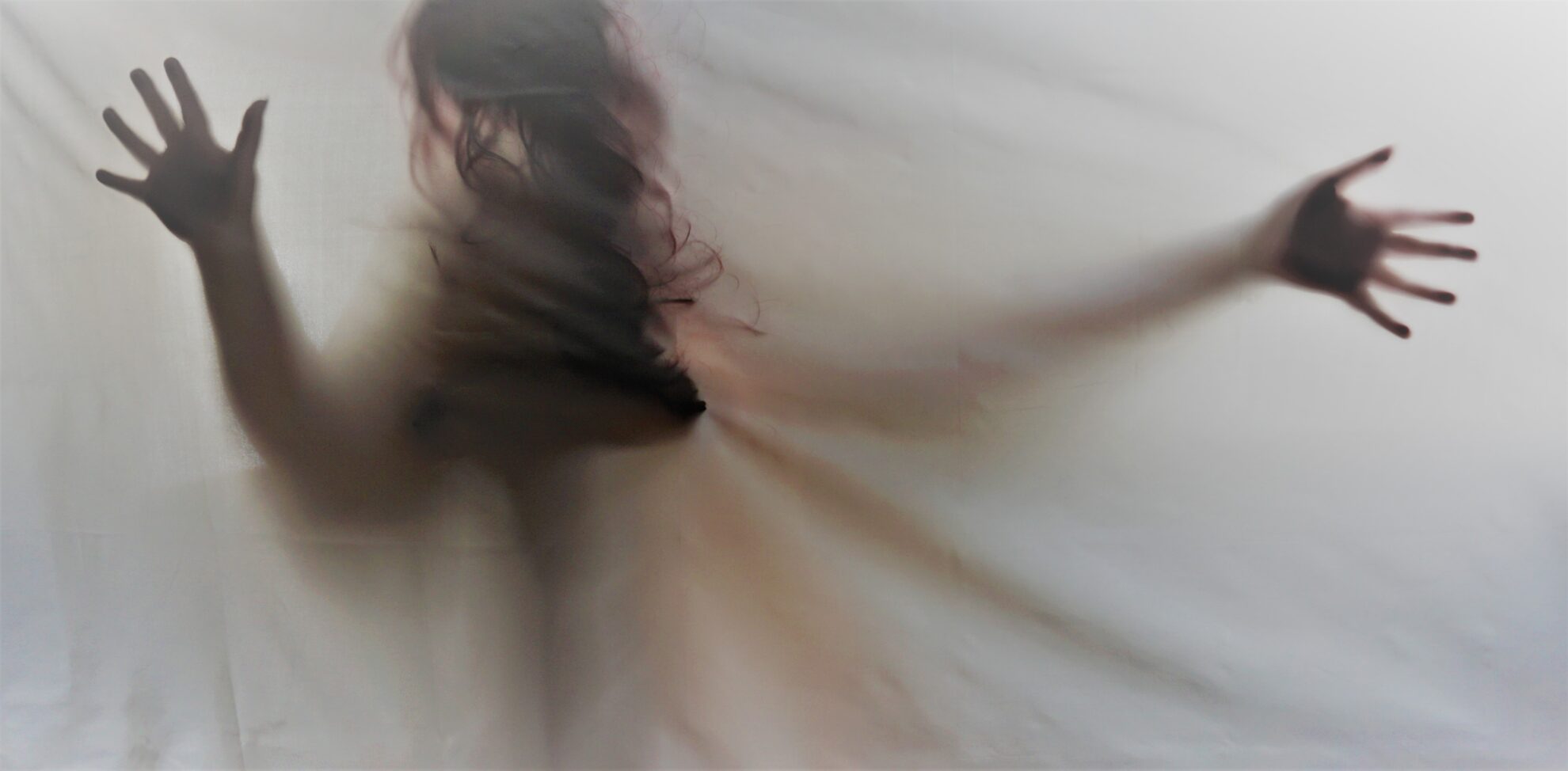Having backed the book Future myself, I was delighted to get the opportunity to interview the authors of this stunning LGBT+ graphic novel. Future is a beautiful yet bittersweet tale of lesbian love through space and time and was awarded an Arts Council England grant alongside the crowdfunding campaign. We find out more from Tom Woodman and Rupert Smissen, the authors of this new LGBT+ graphic novel. Also on the team was Aditya Bidikar, award-winning letterer, working alongside Tom’s quirky writing and Rupert’s beautiful illustration.

Collaborative Working and Creativity During COVID-19
Culture Pledge: Hi, how are you? Tell me about the creative process. Did you write the script before the art was drawn, or was it more collaborative?
Tom Woodman: Hi, I’m okay! It’s slightly freezing here in my flat, but ah well!
I was usually 1-2 chapters ahead of Rupert’s art, which understandably took a bit longer to produce than the script, especially as his work was in demand from all corners – not to mention the fact he had a baby midway through the book’s production! That said, the work Rupert was producing influenced what I wrote for later chapters – ideas I knew would be beautiful in his hands or visual callbacks based on where he’d focused. The same was true of Lizzie’s edits and Aditya’s lettering (though Aditya joined the team quite late in the process), in that their style and choices affected where the later chapters went.
Rupert Smissen: Colder up here north of Hadrian’s Wall, but perhaps only just.
Tom had the story planned, and the script largely fleshed out when I came on board, but was very amenable to any suggestions I made as I worked my way through and was constantly reviewing upcoming chapters to better reflect how my work was unfolding. We met up often to go through sections together and puzzle out the look and feel of each chapter. I think we worked hard to give each other space to shine, with some sequences being very focused on dialogue while others relied heavily on quiet visual storytelling. Overall, I trusted Tom’s vision for the pacing and character of the story and tried to reflect that in my illustrations for it.

Arts Council England, Crowdfunding and a Superb LGBT+ Graphic Novel
CP: How did financing the book work? You obtained finance through a mixture of sources. Was gaining funding from Arts Council England a more straightforward process than Kickstarting? If you had to Kickstart another book, would you?
TW: Gosh, it was complex. So, first, we ran an Unbound campaign, then received an ACE grant, then Unbound stopped producing graphic novels, so we moved, with our wonderful publisher Lizzie Kaye and Cast Iron Books, to Kickstarter! So a bit wild, but I think it worked. That said, as of writing, the book has still cost me more than it’s made, as I paid the team upfront by working double shifts for a year. Comics is… not a financially healthy industry, which makes me even more grateful to our backers and to ACE; if it weren’t for them, this project would’ve never had a chance.
In terms of whether Kickstarting or the ACE application was easier. Lizzie spearheaded the Kickstarter campaign, and I actually applied three times for the ACE support before being successful, so for me personally, Kickstarter. But both were built on the foundation of the work we were producing, by showing the people with the money (whether that was potential backers or the Arts Council) that we were working hard on something worthwhile and asking them to believe in it – so it was something of a snowball effect.
RS: I couldn’t have really committed to the project without Tom offering to pay me for my work. He showed enormous respect for the time the work takes, and knowing how much he had personally invested in Future was a constant motivation for me. Comics work can be superbly labor-intensive, overwhelmingly so when you consider how little financial support there is out there for creators. Tom worked tirelessly behind the scenes to get support for our initial Unbound crowdfund, then to get the Arts Council on board, and finally to bring the Kickstarter with Cast Iron to fruition. Personally, I’m not an active or vocal user of social media, but again Tom got stuck in and created genuine connections and enthusiasm for the book, for which I’m enormously grateful. His and Lizzie’s tireless promotional work was what led to the Kickstarter being the success it was.

A Stunning LGBT+ Graphic Novel
CP: You’ve produced an LGBT+ graphic novel – is the LGBT+ community important to you, and why? You’re both men, and the book is about a lesbian couple – what research did you do to create the book? Were your own relationships an inspiration? How do you think the LGBT+ community will respond to the book?
TW: I think some people see it as an active choice to write about Kay and Murray, with the’default’ being a straight white couple. But both of those would’ve been equally active choices, so the question was what one to go for – and, when defining the one human spark of hope for the future in the otherwise miserable world of Future, what did that spark look like? The answer was Kay and Murray; specifically, in answer to your question, the LGBTQ+ community represents the future I want to see society catch up with, of people being themselves, of love and community and joy against all odds.
In terms of research, I did get feedback on the script and subsequent drafts from LGBTQ+ friends and sensitivity readers, and I was mindful of unpleasant tropes that have persisted in fiction around LGBTQ+ characters. But there was relatively little research beforehand because it’s not a story specifically about being LGBTQ+ – if it were, I wouldn’t have been the person to tell it. It’s about two people who are in love, and those two people are LGBTQ+.
The LGBTQ+ readers of Future have been extremely supportive and welcoming of the book, for which we’re hugely grateful.
RS: I can only echo what Tom has said here. The sexual orientation of Kay and Murray felt almost entirely incidental, and for me, had little bearing on the narrative arc of the story. Tom has written two distinct characters with so much in the way they relate and react for me to work with as an artist. I felt an immediate affinity for them and their relationship and felt able to draw from my own experience. While I felt aware of making work about a lesbian couple as two men, I believe in the importance of equal representation and feel that Future’s attention to detail on the content of Kay and Murray’s respective characters is the best way to address any criticism of two men creating a story with a lesbian couple at its heart. The book is about an experience of a couple, and I can only hope that the emotional dynamics between the two are relatable and engaging for everyone.

A Kickstarter Success and Plans for the Future
CP: How successful has Future been so far? Is it everything you hoped?
TW: In most ways, yes! The book overfunded on Kickstarter, we made the book with Cast Iron (and a huge shout out to Rich’ CPUK’ Hardiman for the flawless printing), people have read the book, and we’ve had fantastic reviews alongside reports of laughter and tears, which is the exact mix I was after.
But we’re still just in the early days. COVID has meant we haven’t had any conventions or a full-on launch yet. So there’s success in whether we funded, in critical reaction, in sales, in breaking even, in maybe even making a profit – there’s lots of success landmarks hopefully still to come! Oh, and in a dream world, it might even get me some more comics work!
RS: I’ve had some great and really heartwarming feedback from folks that have read it and am utterly delighted with seeing it in its final printed state. I’m really looking forward to seeing it in shops and getting to talk to people about it face to face, but to date; I can only express gratitude for everyone who backed it and those that have responded. With the process being so long and labor-intensive, it’s an absolute joy to finally see Future out in the world.
What will you do next? Are you planning another book?
TW: I’ve two mini-projects at present; one is an action-comedy called Dick and Fanny, which I’m working on with Alex Moore and Cardinal Rae, and the other is more Future-like; a black and white short with Paul Peart-Smith called The Shore; I’ll be sharing updates for both on my Twitter, @TomMayoWoodman. I’d love to do a full graphic novel again, I have four or five in mind, but I’m not sure when I’ll ever be able to afford it, to be honest! I might just write them and covet the scripts – or maybe Kickstarter is the way forward for them. What do you think?
RS: 2020 was a trip, and a year that focussed my priorities, so after a series of lockdowns and a move from London to Fife, I’m taking some time to be a parent and work on some personal projects. The Scottish landscape is pretty inspiring, so maybe something investigating my surroundings, but no concrete plans for the time being.

COVID-19 and the Creation of LGBT+ Graphic Novel, FUTURE
CP: Finally, what impact did COVID-19 have on Future, and do you think this was a negative impact, or perhaps even a positive?
TW: Oof, a huge impact, just as we were preparing for release! As mentioned, it canceled all our launch plans, but to be more upbeat, it’s meant that Kickstarter has exploded with creativity and backers, which has meant a lot to so many people in the comics community. I do still hope we can get back to comic cons and whatnot someday. That community is fiercely enthusiastic, and – hopefully – we can come through this together.
RS: The Pandemic hit right when I needed to knuckle down and finish the book, so I guess I can thank it for removing any possible distractions… It made life hard for everyone, but as Tom mentioned, there was definitely a beautiful response from the comics community who seemed to lean into supporting creators they liked and helping get new projects like ours off the ground. I certainly had a renewed appreciation for the importance of people out there creating, from films to books to music, as honestly, that was what got us through those long isolated periods with only ourselves for company. So, swings and roundabouts, I suppose.
CP: Thank you for talking to us, Tom and Rupert. It’s been a pleasure to get to know you and Future more. I’m thrilled I backed it, and I would recommend it to anyone. Don’t miss out on this epic LGBT+ graphic novel!





